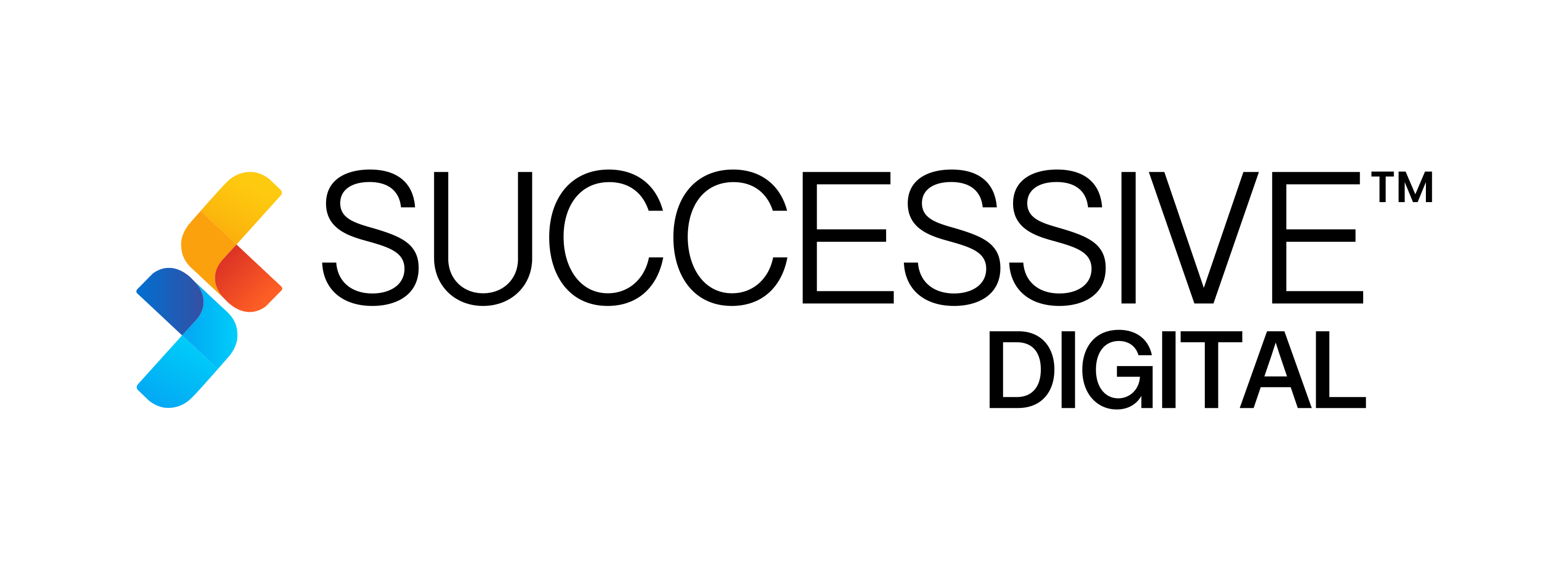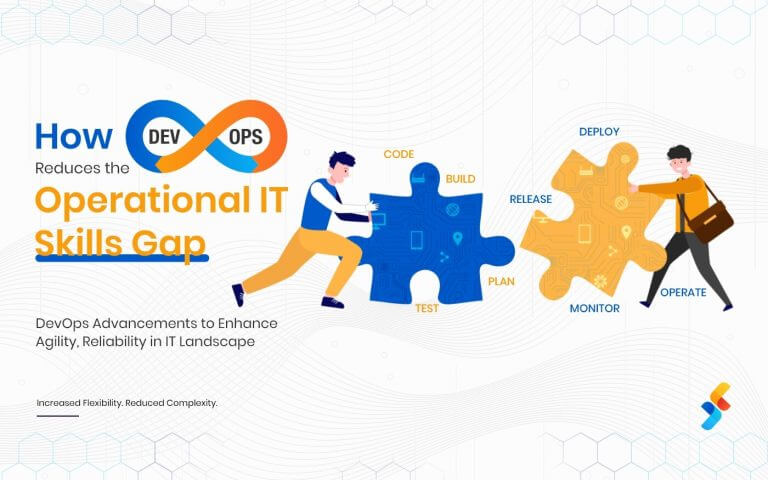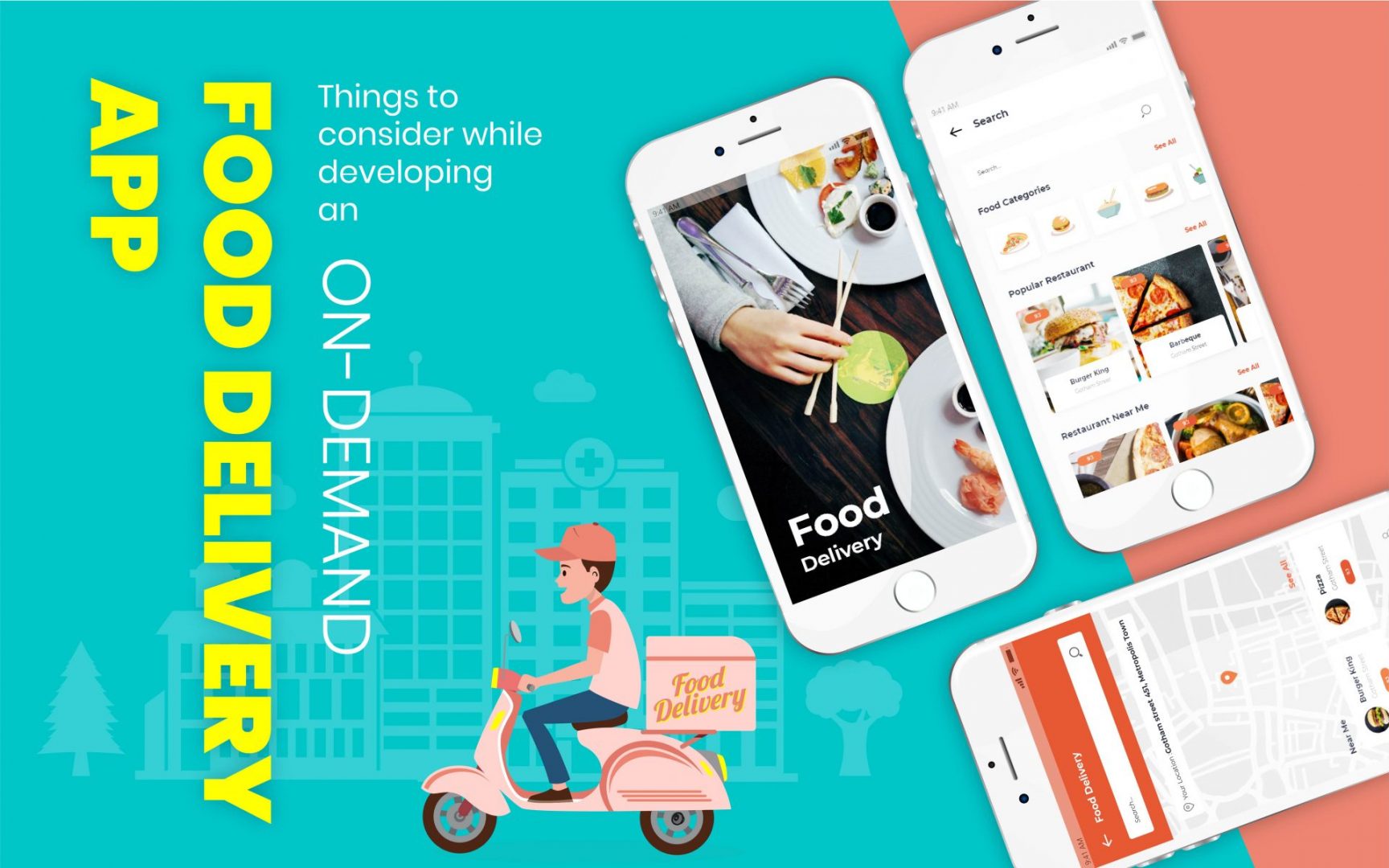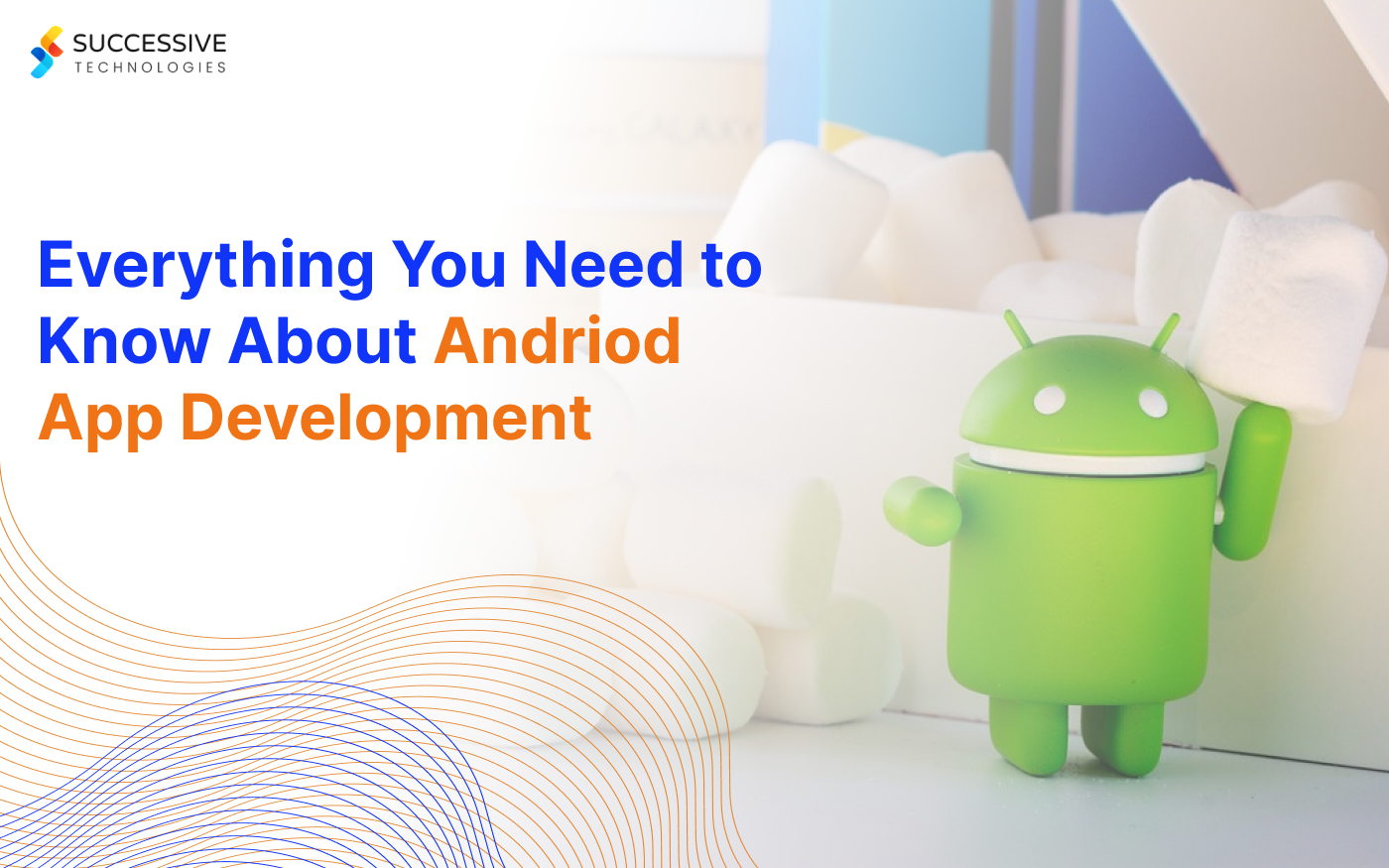Over the years, fitness app development demand has increased due to digital transformation in the health and wellness industry. Thanks to fitness apps, people have the convenience of on-demand health and fitness-related solutions, such as finding a fitness coach for online or offline consultation and tracking fitness levels like BMI, BMR, and water retention. At the same time, fitness apps allow them to track nutrition information of daily food intake, such as carbs, fiber, and protein, and set multiple other health goals.
Consequently, the demand for feature-rich and customer-centric fitness apps is increasing. Digital fitness and well-being apps are projected to grow by 12.30% between 2023 – 2028, adding to a market volume of US$25.40bn in 2028.
Hence, health and fitness app development has shown considerable potential to bring value to people, service providers, and the community. Whether you are an entrepreneur or an enterprise, developing a fitness app can provide you with lucrative benefits.
Want to know “how to create a fitness app?” Let’s dive into the world of fitness application development and understand how to build a fitness app, including its process, features, cost, and tech stack.
Fitness App Industry Market Overview: What are the Benefits of Fitness App Development?
In recent years, the global market for health and fitness mobile apps has experienced significant growth. This growth is fueled by factors such as:
- The widespread adoption of smartphones and wearable devices.
- An increasing focus on fitness and wellness.
- Rising health awareness among the general population.
The market comprises various applications designed to assist users in monitoring physical activity, maintaining healthy lifestyles, and achieving fitness goals. Prominent global fitness apps market players include Fitbit, MyFitnessPal, Nike, Under Armour, Runtastic GmbH, Adidas AG, Asics Corporation, Azumio, Inc., Garmin Ltd., and Google Fit LLC. These companies continually invest in product development, partnerships, and acquisitions to expand their target audience and enhance user experience.
Moreover, the fitness apps market is expected to grow and reach $120.37 billion by 2030, showcasing a CAGR of 24.3% between 2021 and 2030. This growth can be
due to technological advancements, rising consumer health consciousness, and the increasing popularity of wearable devices.
Therefore, it would be wise to invest in fitness app development. However, when considering launching a fitness app, it is crucial to identify the target audience, determine the type of app to create, and define the niche within this vast market.
How to Select the Right Category for Fitness App Development?
Digital fitness and wellness apps often focus on tracking health, working out, managing stress, and providing various home remedies online. Henceforth, several types of fitness apps can be developed, such as:
- Activity Tracking Apps
- Nutrition And Diet Apps
- Yoga And Meditation Apps
- Workout Apps
Let’s understand each of these in detail and help you analyze the scope and impact these apps have created on people’s daily lives.
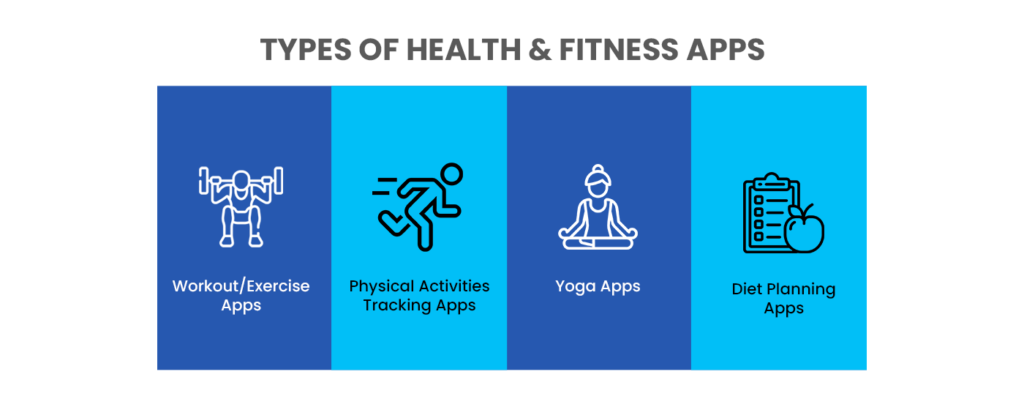
1. Fitness Tracking App Development
A fitness or activity tracking app is a widely adopted fitness application developed for smartphones and wristwatch devices. These types of apps utilize your smartphone’s or wearable device’s sensors to monitor and record physical activity.
The app uses accelerometers, gyroscopes, and GPS technology to gather data. It tracks metrics such as steps taken, distance traveled, calories burned, and active minutes during walking, running, and cycling.
Activity tracking apps are well-suited for fitness enthusiasts and individuals new to fitness, as they encourage a healthier way of life and assist users in attaining their fitness objectives. Google Fit is one of the best examples of activity-tracking apps.
2. Nutrition And Diet Apps
Besides exercising and participating in sports or physical activities, a majority of people have become conscious of their intake of what they eat in a day. Therefore, a nutrition and diet planner app is one of the most in-demand fitness application development expertise areas.
These apps provide a range of features, such as meal planning, calorie counting, and nutrient tracking, which offer valuable insights into users’ eating habits. With comprehensive food databases, recipe recommendations, and personalized diet plans tailored to individual needs and goals, these apps significantly raise awareness and promote healthier eating practices.
Moreover, these apps can offer personalized meal plans, recipe suggestions, or dietitian support. This helps users make informed choices, achieve their nutritional objectives, and support overall health and well-being.
3. Yoga And Meditation Apps
A yoga and meditation app is one of the fastest-growing fitness mobile app development categories. These apps contribute to the holistic well-being of individuals by offering mindfulness, relaxation, and flexibility exercises for both the mind and body. With guided yoga sessions, meditation exercises, and breathing techniques, these apps cater to users at all experience levels.
Users can personalize their practice according to their preferences with a wide range of yoga styles, dedicated meditation features, and detailed instructions. Integrating progress tracking, personalized recommendations, and reminders within these apps promotes consistency in their mindfulness routines.
Additionally, yoga and meditation apps often include progress tracking and meditation timers to help users establish a consistent practice and track their progress over time. Notable examples of popular yoga and meditation apps include Yoga Studio, Headspace, and Calm.
4. Workout Apps
A workout plan app primarily provides users with a wide range of exercise options beyond traditional cardio or dance routines. To enhance user engagement, incorporating gamification features like progress tracking, rewards, and social interaction can be effective.
Creating a workout app that offers unique experiences, such as VR-based exercises, outdoor adventures, or story-driven workouts, motivates users and differentiates your app in the highly competitive fitness market. A dynamic and captivating workout app has the potential to attract a broad audience and foster fitness success.
Must-have Features For Your Fitness App Development
Fitness app development caters to different purposes and offers unique features to users. We have compiled a comprehensive list of essential features that every fitness app should encompass. Incorporating these features can elevate your fitness app’s functionality, user experience, and overall success.
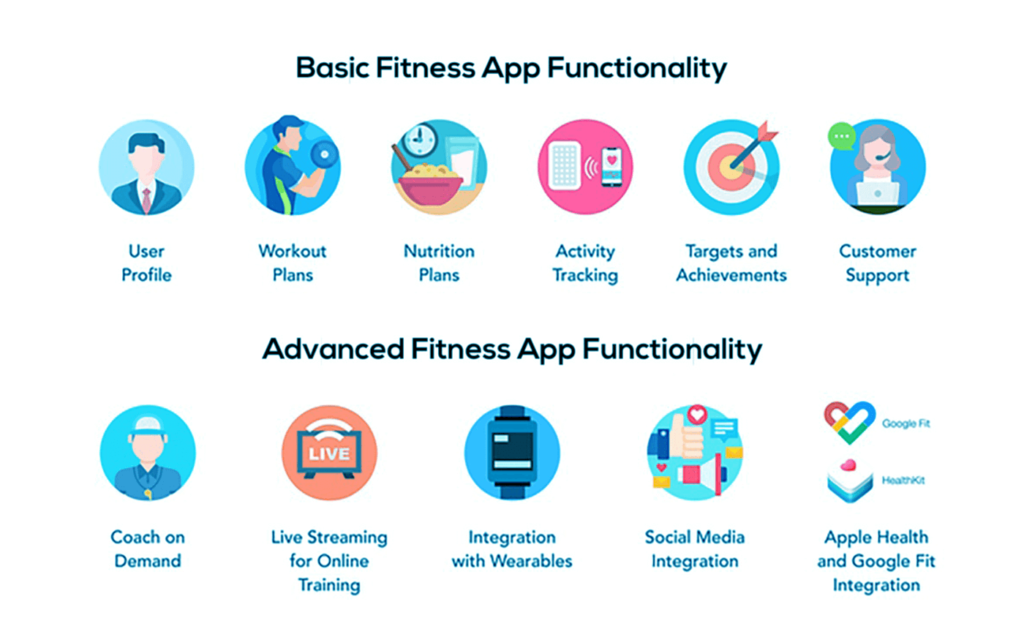
1. Onboarding
To acquaint new users with the app’s features and provide instructions, onboarding proves to be invaluable. Optional for basic fitness mobile app development, onboarding can involve showcasing a few screens, presenting a brief video tutorial, or employing in-app prompts.
2. Sign-Up & Login
Grant users the convenience of signing up using their preferred social media accounts, such as Facebook, Google, Twitter, or Instagram. Additionally, allowing sign-ups with personal email addresses ensures a hassle-free user experience.
3. User Profiles
Users should be able to create profiles with relevant personal information such as name, age, height, weight, gender, and fitness level. This data benefits both app admin and users alike. Admin can offer tailored workout routines, physical activity trackers, and customized plans. For users, profiles provide easy access to subscription plans, exercise history, progress tracking, bonuses, and other pertinent details.
4. Goals
Setting fitness goals is an integral part of any fitness app. Enabling users to establish objectives and track their progress adds motivation and fosters adherence to their fitness goals.
5. Synchronization With Wearable Devices
As the popularity of wearable devices like smartwatches continues to rise, your fitness app must integrate and synchronize with them. You can leverage APIs such as HealthKit and GoogleFit to sync fitness tracker data with your app. The synchronization can be achieved through watchOS and Wear OS operating systems for Apple Watch and Android smartwatches.
6. Workouts & Exercises
Use various media formats, such as photos, 3D animated models, and video illustrations, to effectively illustrate exercises and workouts. Users should have the flexibility to create their own workouts, utilize a predefined set of exercises, or combine both approaches. An organized and searchable content library is essential to facilitate this feature.
7. Tracking
Your app can capture activity data through smartphone sensors or integration with wearable trackers. Smartphones provide data on steps taken, climbed stairs, distance covered, speed, and direction. Notable apps in this domain include Samsung Health. Integration with third-party APIs is necessary to track additional parameters like heart rate, sleep quality, or body temperature and synchronize with fitness wearables.
8. Audio/Video Player
Audio and video components enhance various fitness activities, such as exercises, workouts, running, yoga classes, or meditation. Podcasts featuring trainers’ voices, soundtracks, or video tutorials can effectively guide users. Additional features should include providing feedback, bookmarking/liking tracks, and resuming playback within your fitness app’s player.
9. Product & Recipe Database
A vast database of products and healthy recipes, nutrition analysis, and barcode scanning capabilities constitute compelling features for nutrition apps. Furthermore, enabling users to manually add items that are not listed in your app’s database adds flexibility.
10. Workout Customization
Empower users to customize their workouts, meditations, exercise sets, recipes, or diet plans within the app. Although this feature requires significant effort, prioritizing customer-centricity is pivotal in today’s landscape.
11. Push Notifications & Reminders
Well-timed and targeted push notifications can significantly boost an app’s retention rate by three to tenfold. Remind and motivate your users for daily workouts or provide them with their healthcare insights via push notifications.
12. Payment Feature & Method
Incorporating a payment feature is self-explanatory, allowing you to monetize your app. By integrating a secure payment gateway like PayPal or Visa, users can seamlessly subscribe to premium features, purchase additional content, or access exclusive services within your fitness app.
13. Support & Customer Services
Prioritizing user satisfaction, consider implementing a chat feature where trainers or support staff can provide real-time advice and consultations. Even if live chat options are unavailable, combining chatbots with pre-programmed responses can provide automated assistance. Additionally, ensure that contact information is readily accessible within the app, allowing users to reach out for support and providing a channel for valuable feedback.
14. Profile Settings
Allow users to personalize their experience by including profile settings. This functionality enables users to modify passwords and email addresses, adjust notification preferences, and manage account settings according to their preferences. Granting users control over their profiles enhances their sense of ownership and empowers them to tailor the app to their needs.
How to Develop a Fitness App: Step-by-step Guide
Depending on the app category, fitness apps can have 3 user panels: Admin, Fitness Coach, and End-user. For instance, an activity tracker allows users to track their fitness levels and optimize their daily health, requiring Admin and End-user panels. On the other hand, a workout app where a personal trainer provides online yoga or exercise classes can have 3 user panels: one for customers, one for trainers, and one for admin or owner, as they will require it for administrative purposes.
Before stepping into the fitness app development process, consider the business model you want to acquire for your business. Moreover, decide whether to go with progressive web app development, cross-platform, or native solutions to begin the app development journey.
Step 1: Conduct Market Research to Define Your App’s Purpose and Target Audience
Perform thorough market research, analyze the competition, and identify market gaps to identify the primary goals of your fitness app. Understand your target audience’s needs, preferences, and motivations to effectively build a fitness app that meets their requirements.
Step 2: Plan the App’s Features
Based on your research and target audience, determine the essential features to include in your fitness apps. The features you choose to integrate into your app should create a unique value proposition and help your business stand out from the competition.
Step 3: Choose the Right Technology Stack
Select the appropriate technologies, frameworks, and app development tools, considering cross-platform compatibility, scalability, and maintainability. Decide on the framework, such as React Native or Flutter, and consider third-party API integrations for health and fitness app development.
Step 4: Hire the Best Fitness App Developers
Choose the right team of fitness app developers for your project, considering factors like cost, commitment, availability, and project requirements. You can hire your preferred developers as per the following options, such as:
- In-house team for direct communication and control.
- Hire an offshore fitness app development company for access to skilled professionals.
- Freelancers for specialized skills or small-scale development.
Read our comprehensive guide on mobile app development costs to know the cost of hiring app developers from different regions.
Step 5: Create a User-Friendly UI/UX Design
Design an intuitive, visually appealing, and easy-to-navigate user interface that enhances the overall user experience. Ensure the app is accessible and inclusive for users of different fitness levels and abilities.
Step 6: Develop an MVP (Minimum Viable Product)
Create a minimum viable version of your fitness app, focusing on core features and functionality. The MVP allows you to test the app concept with real users, gather feedback, and validate its market potential before investing further time and resources into development.
Step 7: Begin the Fitness Mobile App Development Process
Based on user feedback from the MVP stage, develop a fitness app with more comprehensive features and functionalities.
Step 8: Test The App
Conduct thorough testing to ensure the app’s functionality, usability, and performance are working as intended. Use a combination of manual and automated testing, and consider beta testing with real users to gather valuable feedback and identify any issues or bugs that need to be addressed.
Step 9: Launch The App
Release your app on the appropriate app stores, following their guidelines and requirements. Optimize your app store listing with relevant keywords, compelling descriptions, and appealing visuals to improve visibility and increase downloads.
Step 10: Monitor Performance And User Feedback
Continuously monitor app usage, user feedback, and app store ratings to identify improvement areas and growth opportunities. Hire one of the best fitness app development companies that can update and enhance your app based on user feedback and market trends to maintain user engagement and satisfaction.
What Technologies to Use For Fitness App Development
You can choose a suitable technology stack for your fitness app development based on your team’s expertise, project requirements, scalability needs, time-to-market, and budget. Consider evaluating the pros and cons of technologies regarding development speed, platform compatibility, performance, community support, and available libraries or plugins.
Here are some commonly used technologies for health and fitness app development:
| Native iOS Development |
|
| Native Android Development |
|
| Cross-platform Development | React Native:
|
Flutter:
|
|
| Hybrid App Development | Ionic:
|
Xamarin:
|
|
| Backend Development |
|
| Cloud Infrastructure and Storage |
|
How Much Does it Cost to Develop a Fitness App?
The fitness app development cost in its minimum viable product (MVP) version typically ranges between $65,000 and $90,000. For a fitness app with extensive features, integration of intelligent technologies like AI, AR/VR, cloud, etc., and extended development hours, the cost to create a fitness app can reach up to $300,000.
This cost varies based on different factors like project requirements, features, discovery phase, technology used, post-launch maintenance, and location of the fitness app development company. You can contact a company with experience building similar apps to get the exact pricing details for fitness mobile app development.
Cost to Develop a Fitness App Based on App Complexity
| App Complexity | Development Hours | Average Cost |
| Simple App Complexity | 8-14 weeks | $65,000 to $90,000 |
| Medium Design Complexity | 17-26 weeks | $120,000 to $200,000 |
| High App Complexity | 32-50 weeks | $2,50,000 to $300,000+ |
Read our guide to wellness and healthcare app development costs to get a detailed explanation of fitness app development costs.
Popular Ways to Monetize Your Fitness App
As a business owner, you must have a question, “Are fitness apps profitable?” The answer is Yes! You can combine multiple monetization models to create a unique monetization strategy that aligns with your target audience and market dynamics.
The choice of the app pricing model depends on factors such as the app’s value proposition, target market, competitive landscape, and revenue generation potential. Let’s take a look at the options available for monetization from your developed app.
Freemium
This model offers a free basic version of the app, allowing users to access essential features and functionality. Additional premium features, such as advanced-level workouts, personalized coaching, or in-depth analytics, are offered through a subscription or one-time purchase. The freemium model aims to attract a large user base with the free version and convert a portion of them into paying customers.
Subscription
In this model, the app requires users to pay a recurring fee (monthly, quarterly, or annually) to access all features and content. Users typically receive full access to premium workouts, personalized plans, exclusive content, and enhanced support. Subscription models provide a steady and predictable revenue stream for the app.
In-App Purchases
Fitness apps may offer in-app purchases for additional features, content, or virtual goods. For example, users can buy workout programs, additional workout sessions, specialized meal plans, or fitness-related products. This model allows users to customize their experience by purchasing specific items or services within the app.
Advertisements
Some fitness apps generate revenue through advertisements. Ads can be displayed within the app, either as banners, interstitials, or videos. Ad-supported apps often offer a free version to users and monetize their user base by displaying targeted advertisements. This model requires a significant user base to attract advertisers and generate substantial revenue.
Partnerships and Affiliates
Fitness apps can partner with fitness equipment manufacturers, nutrition companies, or wellness brands. They may recommend or promote partner products or services within the app, earning a commission for each referral or purchase. This model relies on collaborations and mutually beneficial relationships with relevant industry partners.
Enterprise Solutions
Some fitness apps offer enterprise solutions for businesses, gyms, or fitness studios. These solutions may include employee wellness programs, group subscriptions, or customized app versions for corporate clients. The app charges businesses a fee for providing specialized features and services catering to their needs.
Ready to Elevate Your Business With Fitness App Development?
At Successive Digital, we have hands-on experience in providing innovative health and fitness app development services. Our fitness app solution, ‘SmitFit,’ can be integrated and synchronized with wearable devices, providing actionable insights for better wellness.
We are an expert fitness and healthcare app development company with expertise in developing end-to-end healthcare solutions, including complete wellness platforms. We have an innovation-driven UI/UX team, highly skilled backend developers, and certified cloud professionals who come together to design and architect a complete roadmap for your fitness app development requirements.
Frequently Asked Questions
You must consider several security implications when developing a fitness app to protect user data and ensure the app’s overall security. Here are some key security measures that should be implemented:
- Data Encryption: Implement strong encryption techniques, such as SSL/TLS, to encrypt data transmitted between the app and servers.
- Secure Authentication: Utilize secure authentication mechanisms, such as multi-factor authentication (MFA), to ensure that only authorized users can access the app.
- User Privacy: Clearly communicate the app’s privacy policy to users and obtain explicit consent for collecting, storing, and processing their personal data.
- Secure Backend: Implement robust security measures on the server side, including firewalls, intrusion detection systems (IDS), and regular security audits.
- Secure API Integration: Ensure proper security measures if integrating with third-party APIs or services.
- User Notification and Consent: Notify users about any changes or updates to the app’s privacy policy and seek their consent before accessing their data.
- Regular Security Audits: Conduct periodic security audits and penetration testing to identify and address any vulnerabilities or weaknesses in the app’s security architecture.
It can take 2- 5 weeks to develop a simple fitness app. However, based on the high complexity level, this development time can extend to 8 months or more.
Fitness apps include customized features that allow users to set fitness goals, track caloric intake, monitor health data like heart rate, gather workout ideas, personalize workout schedules, and share progress on social media or within the fitness community.
A fitness app involves various methods and technologies to capture data and ensure accurate and reliable tracking of user activities. Let’s take a look at how this data is captured and utilized.
- Sensors: Fitness apps utilize the sensors available in smartphones or wearable devices to capture data. These sensors provide inputs to fitness apps for activity tracking, distance calculation, calorie estimation, and heart rate monitoring.
- User Input: Manually adding personal health data, allowing more personalized and precise tracking of user needs and behavior patterns.
- Wearable Device: A fitness app captures data through the wearable device’s built-in sensors and syncs it continuously to enable real-time tracking.
- Cloud Storage: Cloud technologies like Amazon Web Services (AWS), Google Cloud Platform (GCP), and Microsoft Azure are commonly used for data storage and management.
- Data Analysis and Visualization: Data visualization techniques, such as charts, graphs, and dashboards, are used to present information in a user-friendly and visually appealing manner.
Let’s delve into the main trends in fitness mobile app development:
- The growing popularity of smartwatches and fitness bands in the current fitness app market.
- Gamification and social media integration to encourage user engagement.
- Harnessing the power of AI and ML technologies to deliver personalized user experiences.
- Virtual fitness classes are giving rise to innovative health and wellness platforms.

